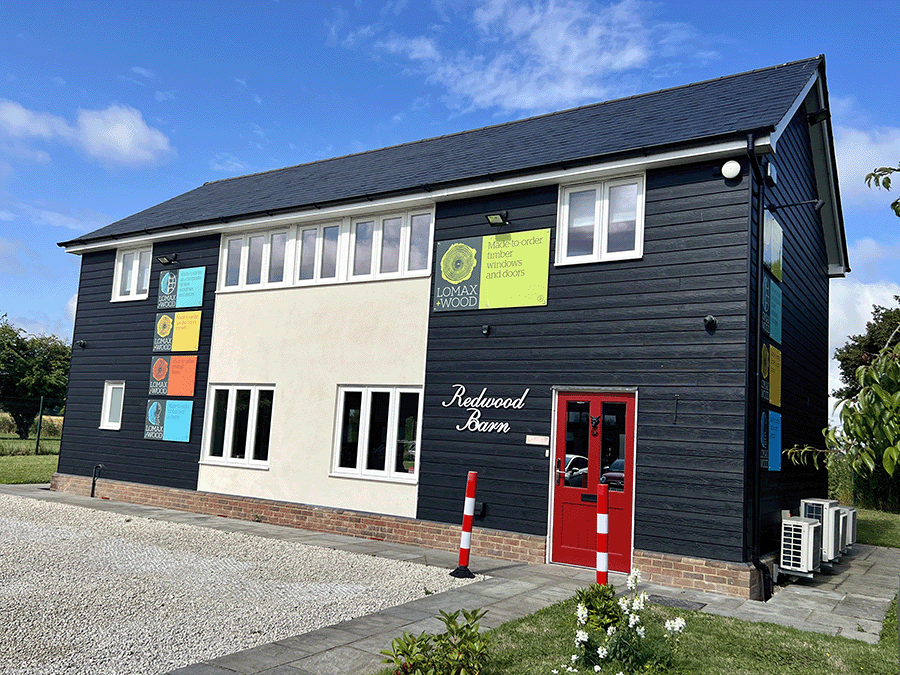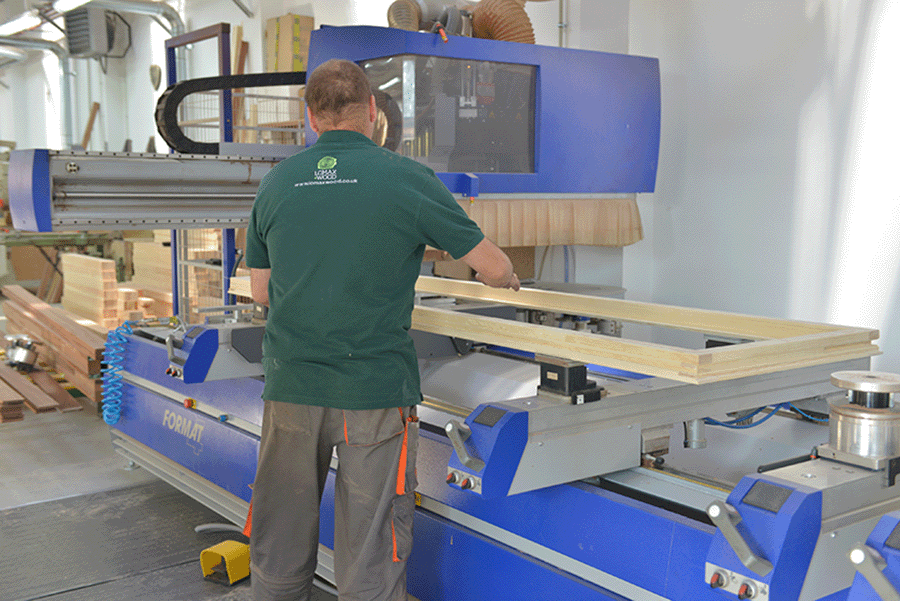What to Consider When Buying New Timber Windows
- 12 June 2024|
- News
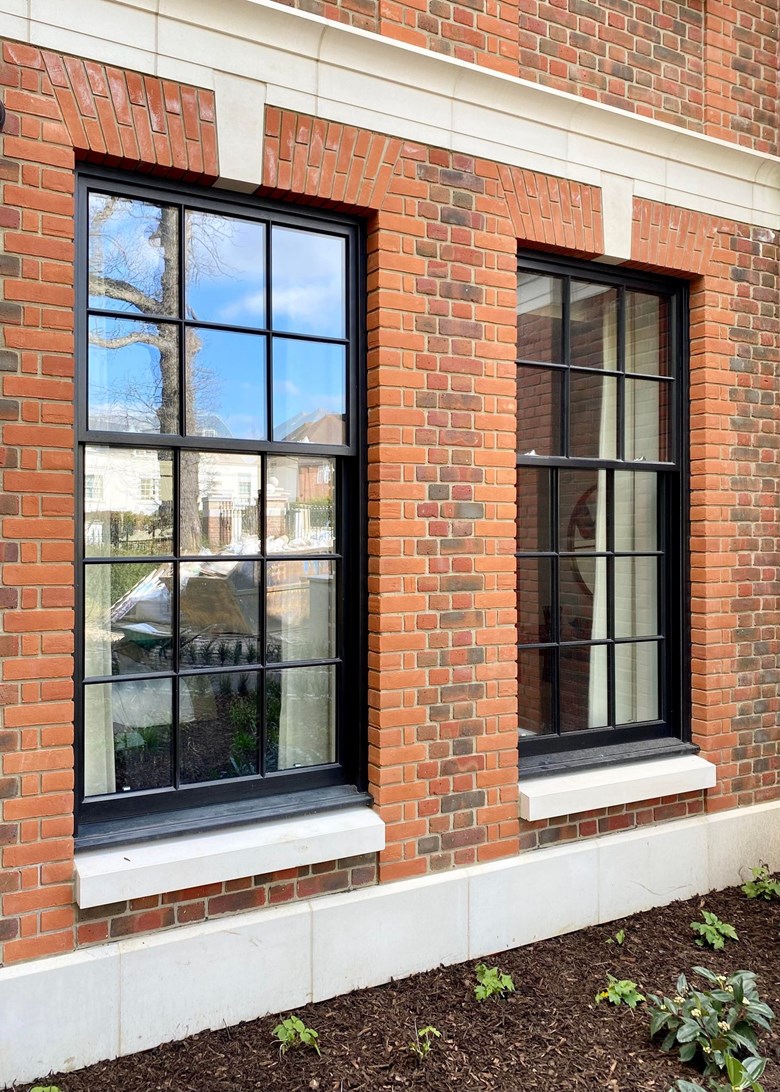
Choosing new timber windows is one of the biggest investments you will make on your home. It is important to take time to make your decision, and that means asking the right questions. Here are some of the crucial points you need to consider.
Timber – The Responsible Choice
At Lomax + Wood, we specialise in hardwood and softwood bespoke windows. But we are fully aware you have other choices. Over the past 40 years, aluminium and uPVC have both become popular choices. We believe that natural wood looks better and performs better, and that has been borne out by research conducted by the University of Derby.
The University researchers found that timber framed windows will deliver a significantly lower Carbon Dioxide footprint over their lifetime when factoring in energy usage and all other environmental factors. Speaking of ecological factors, we are dedicated to meeting FSC® Chain of Custody requirements – the gold standard in sustainability.
Hardwood or Softwood – The Choice is Yours
20 or 30 years ago, there was a perception that hardwood meant high quality and high cost while softwood was a cheaper but inferior alternative. Today, things are a little different. Yes, softwood is still more affordable, but it is far better quality today with the introduction of engineered knot free timber. It will last for decades and last as long as hardwood with the correct maintenance plan. Hardwood windows have a more apparent grain which can often show through the painted finish. It is also important to remember hardwood covers a vast range of species, including Balsa Wood, for example, all hardwoods are not suitable for timber windows and will not necessarily be covered by environmental certification.
Your choice should be guided by environmental certification, the correct sections and details, and the overall supply and fit cost. With a period property, you will want to ensure that you achieve modern performance with traditional sightlines. The replacement windows should enhance the property and not detract from the architect’s original Design.
Casement Windows – The Most Popular Choice
For the past 100 years, casement windows have been the most popular design in the UK. These windows have a combination of fixed sashes and opening sashes, sometimes with direct glazed openings. The sashes can be configured to open from the sides, side-hung, or from the top, top-hung. The other main variation is that of the traditional flush casement window and the modern mass-produced stormproof window.
Aside from deciding on the format of the sashes, the other main decision is whether to choose a flush or stormproof window. As the name suggests, flush windows fit flush to the exterior wall. Stormproof windows are more modern and incorporate an external sill or lip. Stormproof windows are a design produced for mass production and are generally seen as detrimental to the aesthetics of a building. Contrary to the clever marketing name, a stormproof window will not outperform a correctly designed and tested flush casement window.
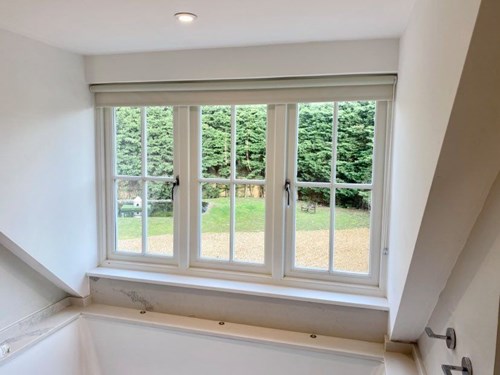
Old flush windows used to have performance issues in terms of leaks. In the 1960s and 70s, it was popular to replace them with stormproof windows, as these performed better.
We provide high performance flush timber casement windows, independently tested and certified to ensure they meet modern thermal and acoustic performance requirements.
If you are wondering whether flush casement windows are suitable for your home, we would be happy to offer some expert advice.
Sash Windows – The Victorian Choice That’s Still Popular Today
Larger homes made in the 18th, 19th and early 20th century mostly had sash windows. While casements have become more popular since, sash windows are still around and are enjoying something of a renaissance in modern country houses, apartment buildings and commercial properties.
The problem with sash windows is that most people associate them with sticking and being a nightmare to open or close. But bear in mind that this is usually because the mechanism is well over 100 years old and has had no maintenance since the 1950s.
As a general rule, keep the same type of windows in a period property, and if it is listed or you are in a conservation zone, you might have no choice. The good news is that our new sash windows perform perfectly, they don’t stick, and they have insulation properties that are an industry benchmark.
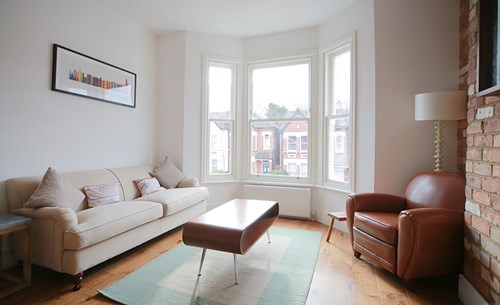
There are two types of sash windows. A sliding sash, also known as a box sash, is the traditional sort that you see in Victorian and Georgian homes. It uses a system of weights and pulleys in a box beside the window, and these counterbalance the moveable sash or sashes so you can open and close them quickly.
The other sort is called a spring sash window. It utilizes a much more straightforward spring-loaded mechanism instead of weights and pulleys. Your choice here really depends on how important originality is to you. If you are in a historic home, then a box sash maintains architectural integrity. On the other hand, a spring sash is lighter, more straightforward and demands less maintenance.
Common FAQs When Buying New Timber Windows
Which Timber is Best for Windows?
Firstly, choose timber that has real certification. That means ensuring your supplier has genuine certification and does not just purport to do so. Both FSC and PEFC certifications can be checked on their respective websites.
What Are The Most Common Questions You Hear From People Choosing Timber Windows?
Do you make made-to-order timber windows and doors? Yes, we do. Each window is designed to replicate existing sight lines, or if a new build is being undertaken, the architect’s design will be reproduced.
Are Timber Windows an Environmentally Responsible Choice?
Yes, wood is one of the most sustainable materials around, and the types of wood used by Lomax + Wood are sourced according to FSC® Chain of Custody requirements – the gold standard in sustainability. Our timber windows and doors are independently tested to provide a standard beyond that required by the Building Regulations.
Do Timber Windows Add Value to a Property?
Yes, the type, condition, and quality of windows will impact the value of your house. Research suggests that on period properties, sash timber windows in period style can increase the value. If the windows have been fitted in the past five years, they will look even better to potential buyers. Incorrectly designed windows and doors will detract from the appearance of the property and, therefore, decrease the value.
Does Lomax + Wood Provide Advice on Choosing The Most Suitable Timber Windows?
Yes, visit our contact page to get in touch. Book an appointment at one of our showrooms, and we will be able to give you our undivided attention.
What is The Life Expectancy of Timber Framed Windows?
Today’s timber frames will last for 60 to 70 years if maintained; there is no such thing as a maintenance-free product in whatever material. All over the country, there are period windows that have lasted for nearly a hundred years. Their durability is down to a mixture of correct positioning in the structure, quality timber and maintenance.

